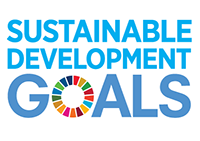Household Water Conservation (Low-Flow Shower Head)
Definition:
Percent of households that had a low-volume toilet.
Methods and Limitations:
A low-flow shower head is any shower head that reduces the water flow and therefore reduces water and water heating costs.
A reduced volume toilet is a water-saving, low volume toilet or modified toilet tank including toilets specifically designed to use less water per flush as well as toilets that have been modified by, for example, adding a brick or weighted plastic bottle in the toilet tank to reduce the volume of water in the tank.
Data for the survey was self–reported and water-use standards for low-flow showers and reduced volume toilets were not specified. A new toilet sold commercially in 2006 was considered a ‘water-saving’ model if it used less than 6 litres per flush, whereas in 1994, a conservation model used less than 13 litres per flush. In addition, households may also have self-modified their fixtures in a number of ways.
Source:
Statistics Canada. Table 38-10-0102-01 Indoor water conservation practices

 Household Water Conservation (Low-Flow Shower Head) in the Sustainable Development Goals
Household Water Conservation (Low-Flow Shower Head) in the Sustainable Development Goals
Click on the SDG to reveal more information
13. Take urgent action to combat climate change and its impacts
Climate change is now affecting every country on every continent. It is disrupting national economies and affecting lives, costing people, communities and countries dearly today and even more tomorrow.
People are experiencing the significant impacts of climate change, which include changing weather patterns, rising sea level, and more extreme weather events. The greenhouse gas emissions from human activities are driving climate change and continue to rise. They are now at their highest levels in history. Without action, the world’s average surface temperature is projected to rise over the 21st century and is likely to surpass 3 degrees Celsius this century—with some areas of the world expected to warm even more. The poorest and most vulnerable people are being affected the most.
Affordable, scalable solutions are now available to enable countries to leapfrog to cleaner, more resilient economies. The pace of change is quickening as more people are turning to renewable energy and a range of other measures that will reduce emissions and increase adaptation efforts.
But climate change is a global challenge that does not respect national borders. Emissions anywhere affect people everywhere. It is an issue that requires solutions that need to be coordinated at the international level and it requires international cooperation to help developing countries move toward a low-carbon economy.
To address climate change, countries adopted the Paris Agreement at the COP21 in Paris on 12 December 2015. The Agreement entered into force shortly thereafter, on 4 November 2016. In the agreement, all countries agreed to work to limit global temperature rise to well below 2 degrees Celsius, and given the grave risks, to strive for 1.5 degrees Celsius. You can learn more about the agreement here.
Implementation of the Paris Agreement is essential for the achievement of the Sustainable Development Goals, and provides a roadmap for climate actions that will reduce emissions and build climate resilience.
See which countries have signed it and which ones have deposited their ratification instruments.

